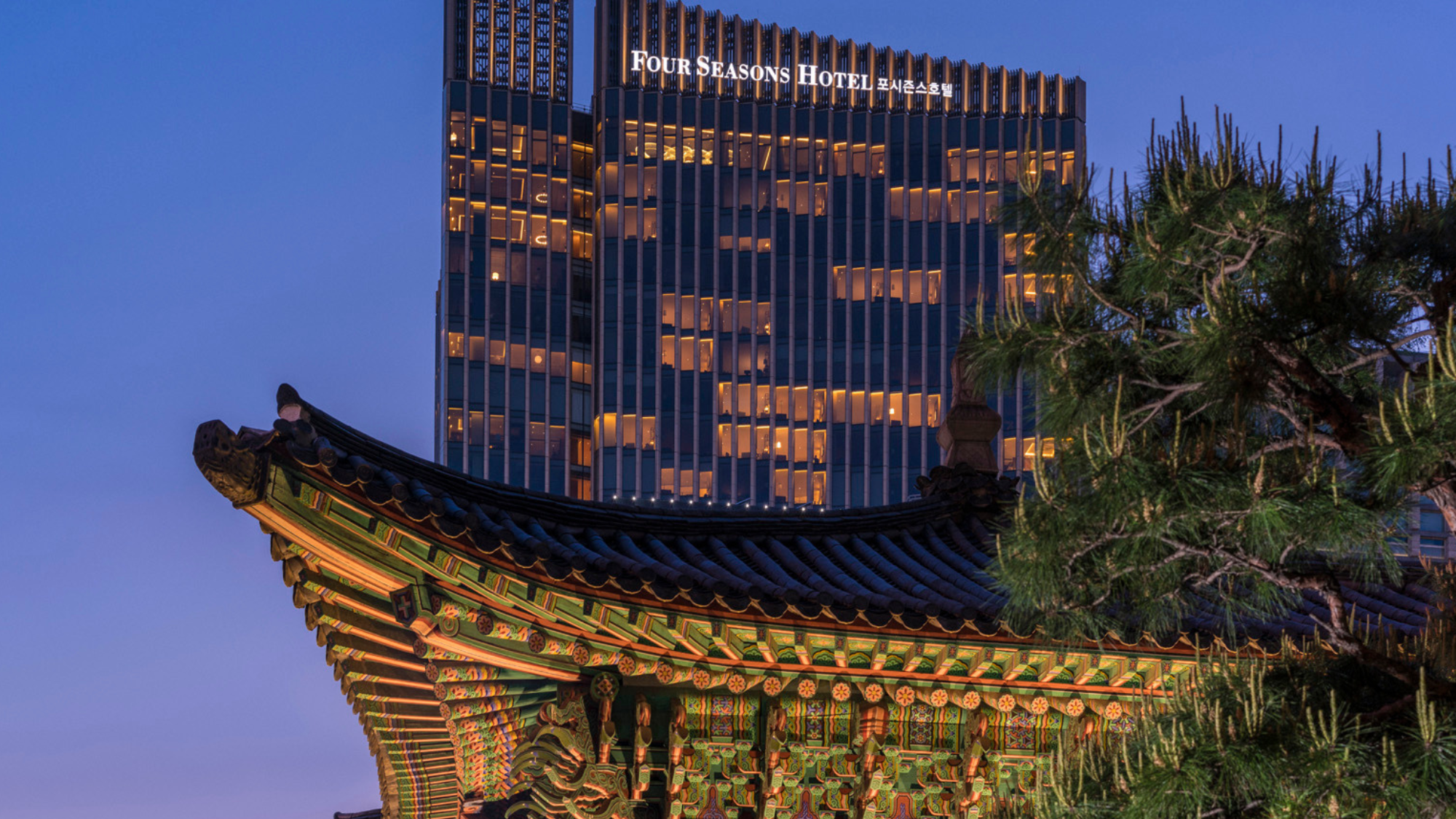Valentine’s Day: spanking, strange customs and secret notes
From Japan to Estonia, every culture has its own twist on the festival of love

For some, Valentine's Day means an inconvenient rush for flowers and gifts. For others, it's the most romantic time of year.
Love it or hate it, 14 February is fast approaching. So why not brush up on the history, customs and superstitions of Valentine's Day, and see if inspiration strikes?
History of Valentine's Day
The Week
Escape your echo chamber. Get the facts behind the news, plus analysis from multiple perspectives.

Sign up for The Week's Free Newsletters
From our morning news briefing to a weekly Good News Newsletter, get the best of The Week delivered directly to your inbox.
From our morning news briefing to a weekly Good News Newsletter, get the best of The Week delivered directly to your inbox.
Like Halloween, the origins of Valentine's Day are rooted in paganism, specifically in a fertility festival known as Lupercalia, says National Geographic.
The festival – which was “wildly popular” until the fifth century AD – was celebrated annually on 15 February. It was customary for men to use whips fashioned from the skins of a goat or dog to spank young maidens in order to increase fertility - “an early form of IVF if you will,” says Tom Chivers in the Daily Telegraph.
Lupercalia was so popular that the young Christian Church was unable to stop pagans taking part, and so it eventually began to modify the festival into a Christian celebration, linking it to the legend of St Valentine.
St Valentine was executed by the Roman Emperor Claudius II after he was caught performing secret marriage ceremonies, which were at the time prohibited by the emperor in an attempt to strengthen his army.
A free daily email with the biggest news stories of the day – and the best features from TheWeek.com
The story goes that Valentine sent a final love note to his jailer’s daughter signed, “From your Valentine”, and thus Valentine's Day was born.
What about Valentine’s Day cards?
Valentine greetings were popular as far back as the Middle Ages, though written Valentines didn’t begin to appear until after 1400. The oldest known Valentine still in existence was a poem written in 1415 by Charles, Duke of Orleans, to his wife while he was imprisoned in the Tower of London following his capture at the Battle of Agincourt. It now forms part of the British Library’s collection.
By the middle of the 18th century, it was common for friends and lovers of all social classes to exchange small tokens of affection or handwritten notes but it was not until the introduction of the penny postage and envelopes in the 19th century that valentine’s cards really achieved mass popularity.
According to the History Channel, the first mass-produced Valentines came from American Esther A. Howland in the 1840s. Known as the “Mother of the Valentine” she made elaborate creations with real lace, ribbons and colourful pictures known as “scrap”.
Today it is estimated around 1 billion Valentine’s Day cards are sent worldwide each year, making it the second largest-card selling holiday after Christmas. Around 85% of all Valentine’s Day cards are purchased by women claims the Greeting Card Association.
Why do some people leave anonymous cards?
According to the Daily Telegraph, this trend was started by the Victorians, “who thought it was bad luck to sign Valentine's cards with their names”.
The Victorians also started the trend for giving roses. They were the favourite flower of Venus, the Roman goddess of love, and have come to indicate passion and romance. It is now estimated more than 50 million roses are given out each Valentine’s Day.
Valentine's Day around the world
Japan: Japanese chocolate companies make half their annual sales in the week leading up to Valentine's Day, although it's not the men who are shelling out their hard-earned cash. In Japan it's traditional for women to do the spoiling. It's not all rosy for the boys, though – they are expected to return the favour on White Day, which falls on 14 March.
South Korea: In Korea they take it a step further. As well as celebrating Valentine's Day and White Day, they also mark Black Day (14 April), on which people not in relationships meet in restaurants to eat black noodles and mourn/celebrate being single.
France: In days of yore, so the legend goes, the single men and women of a village would call to each other from houses on opposite sides of the road in order to find a mate. This was called a "loterie d'amour" (love lottery). If the pairing didn't work out, the scorned women would burn pictures of the men who rejected them on a bonfire while shouting vulgar insults. This eventually led to the practice being outlawed.
Germany: Although Valentine's Day didn't catch on in Germany until after World War Two, the Germans have already developed their own unique tradition for the festival – their Valentine's Day displays are just as likely to feature pigs as roses and love hearts. The pig is a traditional symbol of luck – marzipan pigs are also traditionally given to family and friends at New Year.
Finland and Estonia: Here Valentine's Day is as much a celebration of friendship as it is of romantic love. In both languages the name given to 14 February translates as Friend's Day.
Wales: In Wales, Dydd Santes Dwynwen is celebrated on 25 January, a day that commemorates St Dwynwen, the patron saint of Welsh lovers.
China: Qixi, the Chinese equivalent to Valentine’s Day, falls on the seventh day of the seventh lunar month each year. Known as the Seventh Night Festival it dates back to an old legend when Zhinu, a heavenly king’s daughter, and Niulang, a poor cowherd, fell in love, married and had twins. Separated by Zhinu’s father, it is said the couple are reunited for one night each year.
To mark this occasion, young women prepare offerings of melon and other fruits to Zhinu in hopes of finding a good husband. Couples also head to temples to pray for happiness and prosperity.
Philippines: While Valentine’s Day celebrations are similar to those of western countries, the practice of mass weddings has gained popularity in recent years, leading to hundreds of couples tying the knot or renewing their vows at shopping malls or other public places.
On 14 February 2004, more than 5,000 couples locked lips and broke the world record. The event was organised by a toothpaste maker, “who probably assumed would mean thousands would stock up on the stuff before the big day” says The Metro.
Brazil: While falling later than Valentine’s Day, Dia dos Namorados sees single women write down the names of men they fancy and then draw them out of a hat.
According to tradition, the one they pluck out will be the man they marry.
Guatemala: Known as El Día del Cariño, Valentine’s Day in Guatemala is a colourful, affectionate affair, and like much of Latin America is as much about friendship as love.
In the capital, Guatemala City, it is common for locals and tourists to dress up in feathered masks or vivid Mayan attire and partake in Old Love, a senior citizens’ parade, reports The Atlantic.
England: Perhaps one of the oddest Valentine’s Day traditions can be found in England. The HuffPost UK says that on the eve on Valentine’s Day, “women in England used to place five bay leaves on their pillows — one at each corner and one in the center — to bring dreams of their future husbands. Alternatively, they would wet bay leaves with rosewater and place them across their pillows.”
-
 8 incredible destinations to visit in 2026
8 incredible destinations to visit in 2026The Week Recommends Now is the time to explore Botswana, Mongolia and Sardinia
-
 Wave of cancellations prompt Kennedy Center turmoil
Wave of cancellations prompt Kennedy Center turmoilIN THE SPOTLIGHT Accusations and allegations fly as artists begin backing off their regularly scheduled appearances
-
 The dark side of how kids are using AI
The dark side of how kids are using AIUnder the Radar Chatbots have become places where children ‘talk about violence, explore romantic or sexual roleplay, and seek advice when no adult is watching’
-
 Four Seasons Seoul: a fascinating blend of old and new in South Korea
Four Seasons Seoul: a fascinating blend of old and new in South KoreaThe Week Recommends Located right in the heart of the action, this classy hotel is the perfect base to explore the capital
-
 A dreamy skiing adventure in Niseko
A dreamy skiing adventure in NisekoThe Week Recommends Light, deep, dry snow and soothing hot springs are drawing skiers to Japan’s northernmost island
-
 Grove of Narberth: comfort and style in the Welsh countryside
Grove of Narberth: comfort and style in the Welsh countrysideThe Week Recommends This boutique Georgian manor in Pembrokeshire is the perfect rural retreat
-
 The 5 best zombie TV shows of all time
The 5 best zombie TV shows of all timeThe Week Recommends For undead aficionados, the age of abundance has truly arrived
-
 The rise of English sparkling wine
The rise of English sparkling wineThe Week Recommends As UK-based brands give champagne a run for its money, here’s everything you need to know about choosing the right bottle
-
 8 hotels that show off the many facets of Japan
8 hotels that show off the many facets of JapanThe Week Recommends Choose your own modern or traditional adventure
-
 Japan meets Italy at The Bulgari Hotel in Tokyo
Japan meets Italy at The Bulgari Hotel in TokyoThe Week Recommends Experience the peak of hospitality in an exclusive high-rise hotel in the heart of Tokyo
-
 5 fun cycling tours that let you vacation on two wheels
5 fun cycling tours that let you vacation on two wheelsThe Week Recommends Gain a new perspective while pedaling